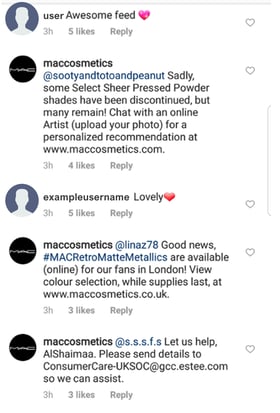
What Does the Youtube Ads Crisis Mean For Facebook Advertisers?
In a surprising twist of events, YouTube managed to find itself in hot water not once, but twice in 2017. This time, it was discovered that many of the videos of children performing normal activities like doing gymnastics, playing with their toys, going to the beach, attracted child predators posting sexually explicit comments that YouTube has failed to remove (in some cases even after they were reported).
In addition to this, YouTube ads for major international brands appeared alongside these videos, including Amazon, Mars, Adidas, Stella McCartney and many more, as became evident in an investigation conducted by The Times.
Some of the videos were supposedly posted by the children themselves, while many other were posted by adults. The Times took this even further, speculating that the brands had inadvertently funded child abuse through the ads. Content creators receive 55% of the ad revenue, with the rest going directly to YouTube. Thus, the predatory comments made it evident that a big share of the brands’ ad spend went to fund the creators of pedophiliac entertainment.
This has resulted in a backlash with major advertisers suspending all of their YouTube ads, which must have been a hard decision to make right before one of the busiest shopping days - Black Friday. Mondelez, Cadbury, Lidl, Adidas, HP and many more have joined the boycott.
The Guardian quotes a Mars spokesperson saying that they were “shocked and appalled” by this situation. Mars stated they will not advertise on YouTube and Google globally until they “have confidence that appropriate safeguards are in place”.
Constant control of a large volume of ads is challenging
YouTube has a community of trusted flaggers - volunteers who report content and comments that violate YouTube’s regulations. In addition, the company uses an algorithm to identify inappropriate sexual comments. As pointed out by The Guardian, the system is unable to tackle this problem and peadophiles continue to comment on videos of children.
Earlier this year brands like Coca-Cola, Walmart, Starbucks, General Motors and others suspended their ads on YouTube after finding out their ads were displayed with videos featuring racist content.
Right now the companies are facing a challenge to stay in control of their online campaigns, context and placement of ads that is dictated by algorithms set in place by social media giants like Google and Facebook.
Similarly, the platforms themselves are challenged with drawing a line when it comes to the freedom of speech that is often abused by their users. The current policies attract opportunities for hate speech, harassment, bullying and other inappropriate comments.
Not limited to personal attacks, these can also include brand attacks, such as counterfeit content, unsolicited competitor promotions, spreading of false information, spam and scam.
Who should be responsible?
With all the money spent on social media ads, shouldn’t advertisers always be aware of what’s going on?
It is still a grey area whether it’s ultimately the channel’s or the brand’s responsibility to ensure their ads are performing at the desired level and are displayed appropriately. When the biggest social media networks fail to react fast enough, the fate of brand reputation is in your hands as the marketer.
Leaving your ads to run wild and only tracking the metrics (at best) has turned into irresponsible marketing conduct. Accusations of child abuse funding, such as were brought up by a major news outlet like The Times, can cause irreparable damage to a brand’s reputation and perception.
Considering the time and resources it might take to fix such a situation, it’s much cheaper and safer to make sure you have monitoring processes in place.
You can’t give up control
When a brand willingly gives up control of the conversation on their social media properties, they leave it to the commenters to take it anywhere they want. It shows that the company doesn’t care and doesn’t listen to the customers.
It doesn’t have to be as horrible as those predatory YouTube comments. However, spam, scam, harassment or negative comments can be often seen on Facebook and Instagram ads. What’s worse is that the brands are paying to promote those, as the comments will follow the ads everywhere.
Here is an example from a world-famous brand:

Imagine the following situation. You see a great ad on Facebook. It has compelling imagery and copy, and it actually promotes something you need or want. You see there are comments, so before clicking on the ad, you want to see what people say.
According to Vendasta, 88% of online shoppers check out online reviews before making a purchase decision. The reviews produce on average an 18% growth in sales, with Facebook now being one of the most trusted review websites.
So when you click on the comments in the ad that got your attention, and you see spam, abuse, unanswered questions or bad reviews, you can’t help wondering why is this brand pushing their ads on you and then turns away? Is it worthy of your trust as a customer at all?
Facebook ad comments can damage brand perception
When you pay for Facebook ads and invest in your brand’s social media presence, not doing proper housekeeping there can turn out to be rather costly.
In their study about online damage control published in Journal of Interactive Marketing, Van Noort and Willemsen found* that negative eWOM (electronic word-of-mouth) goes further than simply a lost sale here and there. It has a strong effect not only on consumer behavior and their purchase decision-making process, but also on brand choice, brand evaluation and brand loyalty.
In a survey conducted by SproutSocial, 65% of respondents said that if they see complaints on social media, it will create certain doubts for them regarding the brand in question, but they will do their own research first. However, 17% will take the complaint as is and simply won’t buy from this brand again. 17% can be a lot of potential sales to lose!
Here’s a great example of a brand keeping their ads in check, thus getting extra value out of them:

So what can you do?
The answer is both simple and complicated. All you have to do is pay attention and respond. Pay attention to spam and scam, making sure those are removed in a timely manner. Respond to customer inquiries, respond to complaints, as the ads take them beyond your own social media properties.
Research shows that the amount of messages received by brands on social today has grown by 146% than just 3 years ago. Shockingly, their response rate has diminished, with only 1 out of 10 messages answered on average.
The complicated part is: how can you keep track of all the comments you are getting on your ads, keep them spam-free, be alert in case potentially damaging situations might arise, and also answer to everyone?
You can employ more people to watch after your ads 24/7, including weekends and holidays. But realistically that’s not scalable at all. People get sick, things get overlooked, and a small human error can lead to big trouble.
There is another option. You can use a solution like BrandBastion in the most cost-efficient way. It doesn’t rely on algorithms or basic rules that can significantly limit the user experience.
Powered by a combination of humans and AI with natural language processing, it brings the best of both worlds. AI ensures that human error is non existent, nor does it need weekends or breaks. It doesn’t miss any of potentially troublesome comments.
BrandBastion’s professional analysts ensure that your audience experiences a real human interaction, with response time of up to 8 minutes.
You can master all of the intricate and delicate aspects of social media and we are delighted to help!
*Van Noort and Willemsen (Van Noort, G., & Willemsen, L.M. (2012). Online damage control: the effects of proactive versus reactive webcare interventions in consumer-generated and brand-generated platforms. Journal of Interactive Marketing, 26(3), 131–140.)
